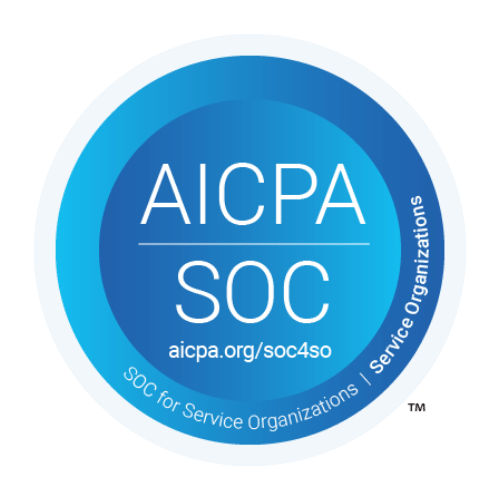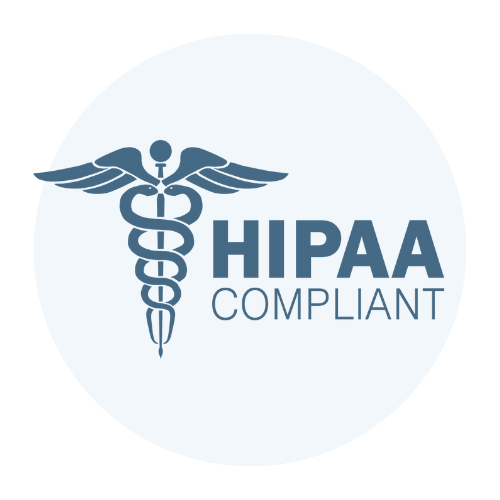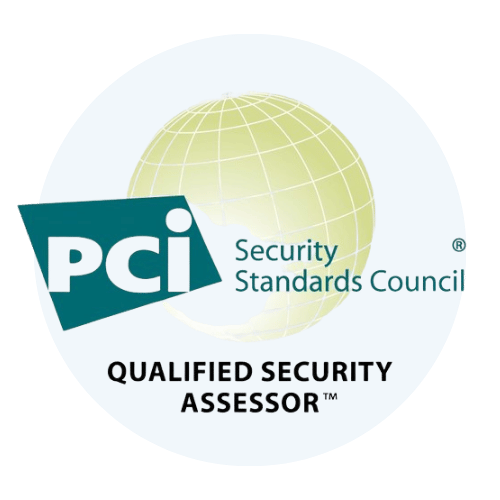CMMC and NIST: Aligning Cybersecurity Frameworks for Enhanced Protection
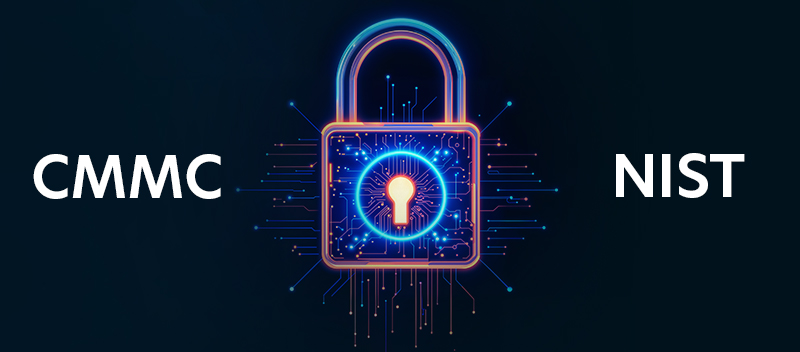
The aerospace and defense sector has faced a dramatic surge of 300% in cyberattacks since 2018. This statistic highlights the urgent need for stronger and more coordinated cybersecurity measures. To tackle these risks, the Department of Defense (DoD) introduced the Cybersecurity Maturity Model Certification (CMMC). Its purpose is to help defense contractors protect sensitive data while ensuring they remain eligible for critical DoD contracts. On the other side of the equation is the National Institute of Standards and Technology (NIST). Known globally for its comprehensive cybersecurity guidelines, NIST has established frameworks like: NIST SP 800-171 – Focused on protecting controlled unclassified information. NIST SP 800-53 – Broader frameworks for cybersecurity controls in information systems. However, complying with both CMMC and NIST can be overwhelming for many organizations. Missteps are common, even costly. Aligning these frameworks goes beyond simplifying compliance. It strengthens your defenses, reduces attack risks, builds client trust, and gives you a sharper competitive edge. These benefits collectively make the extra effort worth it. Understanding CMMC and NIST Frameworks The DoD has updated the CMMC to version 2.0, aiming for a more streamlined and efficient framework. While the goal remains the same —protecting sensitive information across the defense supply chain — CMMC 2.0 introduces significant changes to simplify implementation without sacrificing critical security standards. The updated CMMC 2.0 framework consolidates the previous five certification levels from version 1.02 into three streamlined levels: Level 1 – Foundational Focuses on basic cybersecurity practices drawn from FAR 52.204-21. Suitable for companies handling Federal Contract Information (FCI). Level 2 – Advanced Based on the 110 security requirements outlined in NIST SP 800-171, this level is necessary for contractors working with Controlled Unclassified Information (CUI). Level 3 – Expert Incorporates advanced security practices, aligned with a subset of NIST SP 800-53, to defend against the most sophisticated threats. Assessment Requirements The evaluation process now varies depending on the level of certification required by a contract. Here’s what companies need to know: Level 1 requires self-assessments. Level 2 includes a mix of self-assessments for some programs and third-party assessments for higher-priority contracts. Level 3 mandates formal government-led assessments due to the critical nature of the data involved. Most contracts will require compliance at Level 1 or Level 2. However, understanding the three levels is crucial for ensuring alignment with CMMC requirements, maintaining eligibility for contracts, and staying competitive. Transition Period Defense contractors currently aligned with CMMC 1.0 must start preparing for the transition to CMMC 2.0. This includes revising practices, governance, and documentation to meet the updated requirements. While the timeline for full implementation continues to evolve, companies are encouraged to act swiftly. NIST Cybersecurity Frameworks Overview The NIST CSF is respected worldwide for its guidance on reducing cybersecurity risks. Its major publications include: NIST SP 800-171 Focused on protecting CUI in nonfederal systems and organizations. NIST SP 800-53 Covers a broad range of security and privacy controls that companies can adopt. At the heart of the NIST CSF are six core functions aimed at building strong cybersecurity programs: Identify – Pinpoint risks to systems and sensitive data. Protect – Apply security measures to prevent hazards. Detect – Monitor systems to spot incidents quickly. Respond – Act immediately to contain and resolve threats. Recover – Restore affected systems and resume operations after disruptions. Govern – Develop governance structures and processes to oversee cybersecurity risk management. Bridging CMMC and NIST The CMMC framework builds on the foundation set by NIST SP 800-171, integrating its security requirements while tailoring them to defense contractors. By aligning these frameworks, contractors not only achieve CMMC compliance but also enhance their cybersecurity risk management. Taking it a step further, adopting the in-depth controls found in NIST 800-53 can help contractors meet higher CMMC levels and stay protected against growing cybersecurity threats. For more on our CMMC and NIST compliance services, click here CMMC NIST Aligning CMMC with NIST Frameworks Key Similarities CMMC and NIST CSF share a foundation built on common principles. Both stress the value of risk management and exhort businesses to recognize, evaluate, and reduce risks to their data and systems. Another important element is continuous development; to keep ahead of the constantly changing cybersecurity issues, they want businesses to assess and improve their procedures on a regular basis. Additionally, both frameworks focus on implementing and maintaining effective security controls. From access management to incident response, the frameworks prioritize actionable measures that ensure sensitive information, such as CUI, is always protected. These shared principles make it easier for organizations already familiar with one framework to align with the other. Key Differences While there is overlap, notable differences exist between the two frameworks. 1. Specific Requirements CMMC has specific mandates tailored to the needs of defense contractors, some of which are more strict than those found in NIST SP 800-171. For instance, CMMC 2.0 Level 2 incorporates NIST SP 800-171 but also requires assessments by third parties for higher-priority contracts, which is something that NIST does not mandate. 2. Focus Areas CMMC’s structure is designed to meet the DoD’s unique needs, integrating aspects of NIST 800-53 at its highest level, whereas NIST frameworks are more general and applicable across various industries. These nuances require careful attention and strategic planning. Practical Guidance For defense contractors and other organizations managing CMMC compliance alongside NIST, an integrated approach is key. Here’s a roadmap to help streamline the process: — Understand the Overlaps Start by identifying areas where CMMC and NIST align, such as identity and access management, incident response, and protective controls. This will allow you to build core systems that satisfy both frameworks. — Conduct a Gap Analysis Compare your current cybersecurity practices with the requirements of both CMMC and NIST SP 800-171. Highlight areas where additional effort is needed; this is especially important for meeting CMMC 2.0 Level 2 standards. — Develop an Action Plan Prioritize critical tasks like protecting CUI and ensuring regular monitoring of your systems. Implement security controls incrementally if resources are limited, beginning with high-risk areas.
Conquer GDPR Compliance with the Right Software
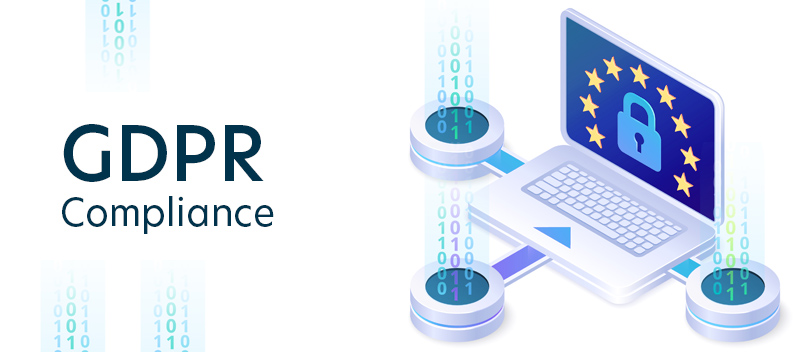
The General Data Protection Regulation (GDPR) was enacted to protect personal data and privacy for individuals within the European Union. The regulations mandate stringent data protection measures with significant penalties for non-compliance. Obtaining explicit consent for data processing, data security, and individual rights to data access and erasure are essential prerequisites. However, achieving GDPR compliance presents numerous challenges for organizations, including the complexity of the regulations, the need for continuous monitoring, and non-compliance. GDPR compliance software emerges as a powerful solution, offering tools to streamline compliance processes, enhance data security, and ensure adherence to regulations. Utilizing GDPR compliance software not only simplifies the compliance journey but also provides peace of mind. Understanding GDPR Compliance Software GDPR compliance software streamlines the process of managing and protecting personal data, ensuring that all activities comply with GDPR standards. Core Functionalities of GDPR Compliance Software GDPR compliance software typically helps organizations identify and document all personal data they handle. It manages and tracks user consent for data processing activities. It can also facilitate the handling of requests from individuals to access, rectify, or erase their personal data. Furthermore, it can assist in evaluating the impact of data processing activities on individuals’ privacy and provide tools for reporting and managing data breaches promptly. Benefits of Using GDPR Compliance Software Implementing GDPR compliance software offers numerous advantages: Reduced Risk: By ensuring consistent adherence to GDPR requirements, organizations can minimize the risk of non-compliance and potential fines. Improved Efficiency: Automating compliance tasks saves time and reduces the administrative burden on staff, allowing for more efficient operations. Cost Savings: Investing in GDPR compliance software can lead to long-term savings by preventing costly data breaches and legal penalties. Enhanced Data Security: The robust security features of GDPR tools help protect sensitive information from unauthorized access and cyber threats. Simplified Compliance: The software for GDPR compliance simplifies the complex process of meeting regulatory requirements, ensuring that organizations stay up-to-date with evolving data protection laws. For more on our GDPR Compliance services, Click Here Key Features of GDPR Compliance Software — Data Mapping and Inventory GDPR compliance software aids in identifying and cataloging all personal data within an organization, ensuring thorough data management. — Data Subject Rights Management Efficiently manage and respond to data subject requests for access, correction, and deletion of personal data, streamlining compliance efforts. — Privacy Impact Assessments (PIAs) Conduct and document privacy impact assessments to evaluate risks associated with data processing activities, ensuring proactive risk management. — Breach Detection and Response Monitor for potential data breaches and provide tools for immediate response and reporting, minimizing damage and regulatory penalties. — Record-Keeping and Documentation Maintain detailed records of data processing activities and compliance measures to demonstrate adherence to GDPR requirements during audits. — Employee Training and Awareness Provide comprehensive training modules to educate employees about GDPR regulations, fostering a culture of compliance and data protection. Selecting the Right GDPR Compliance Software Choosing the right GDPR compliance software is crucial for ensuring your organization meets all regulatory requirements efficiently. Here are key factors to consider: Organization Size: The scale of your operations will determine the complexity and features needed in the software. Large companies may require more robust solutions. Industry: Different industries have unique data protection challenges. Choose software tailored to your sector’s specific needs. Specific GDPR Requirements: Ensure the software covers all GDPR mandates relevant to your organization, such as data subject access requests and breach notifications. Importance of Vendor Evaluation and Due Diligence Evaluating vendors meticulously is essential for selecting reliable GDPR compliance software. Look for vendors with: Proven Track Record: Opt for vendors with a history of successful implementations and satisfied clients. Comprehensive Support: Ensure they offer robust customer support and training resources. Security Standards: Verify that the vendor complies with top-tier security standards to protect your data. Tips for Successful Software Implementation Conduct a Needs Assessment: Identify your organization’s specific GDPR compliance needs before selecting software. Pilot Testing: Run a pilot to assess the software’s functionality and compatibility with your existing systems. Employee Training: Ensure thorough training for staff to maximize the software’s benefits. Continuous Monitoring: Regularly review the software’s performance and update it to keep up with evolving GDPR requirements. Selecting the right GDPR compliance solution will not only streamline compliance efforts but also bolster your organization’s data protection measures. Talk to our experts today! The Future of GDPR Compliance Software The landscape of GDPR compliance software is rapidly evolving, driven by emerging trends and innovative technologies. Emerging Trends and Technologies Automation and Integration: Modern GDPR compliance software increasingly leverages automation to streamline processes such as data mapping, breach reporting, and record-keeping. Integration with existing IT infrastructure ensures seamless operation and efficiency. Cloud-Based Solutions: Cloud-based GDPR compliance solutions offer scalability, flexibility, and remote accessibility, making it easier for organizations to manage compliance in a distributed environment. Real-Time Monitoring: Enhanced real-time monitoring capabilities provide immediate alerts for potential compliance issues, allowing for prompt action and risk mitigation. Potential of Artificial Intelligence and Machine Learning Artificial intelligence (AI) and machine learning (ML) are set to revolutionize GDPR compliance by providing advanced analytics and predictive capabilities: Automated Data Classification: AI-driven tools can automatically identify and classify personal data, reducing manual effort and increasing accuracy. Predictive Risk Management: ML algorithms can analyze patterns to predict potential compliance risks, enabling proactive measures to prevent data breaches. Enhanced Data Subject Request Handling: AI can streamline the process of managing data subject requests by automating responses and tracking compliance deadlines. Importance of Continuous Improvement and Adaptation As the regulatory environment and technological landscape continue to evolve, organizations must prioritize continuous improvement and adaptation in their GDPR compliance strategies: Regular Updates: Stay informed about changes in GDPR regulations and update compliance software accordingly to maintain adherence. Ongoing Training: Ensure ongoing employee training to keep staff updated on the latest compliance practices and technologies. Performance Reviews: Conduct regular reviews of the effectiveness of your GDPR compliance solution to identify areas for enhancement and ensure optimal performance. By embracing these trends and
Accelerated CMMC Compliance: TrustNet’s Simplified Approach

CMMC (Cybersecurity Maturity Model Certification) is a security framework developed by the U.S. Department of Defense (DoD) to protect the country’s defense industrial base from cyber threats. The framework establishes requirements that organizations must meet before conducting business as defense contractors or subcontractors. If your company intends to participate in the DoD’s supply chain, you will likely need an authorized third-party assessor to get you through the CMMC compliance process. While the latest iteration of CMMC (2.0) is still in the rulemaking process, companies that acquire certification early will have significant advantages over competitors who would instead drag their feet on compliance. Only companies that prove their readiness and resilience can bid for and win the juiciest contracts. To gain the advantage, your company must develop a broad understanding of the CMMC framework and build a cost-efficient strategy to accelerate its compliance journey. CMMC Basics Based primarily on the security requirements of the National Institute of Standards and Technology (NIST), CMMC is designed to protect two types of data: Federal Contract Information (FCI). Information used under a contract to develop a product or deliver a service where such information is not intended for public release. Controlled Unclassified Information (CUI). Information is not classified but still needs to be protected due to government legislation or policy. Includes data on critical infrastructures, financial records, and international agreements. Certification Levels As part of the program, third-party auditing firms will be certified and authorized by the CMMC Accreditation Body to conduct independent audits for organizations that handle critical national security information (mostly CUI). These accredited auditors are called CMMC Third-Party Assessment Organizations (C3PAO). C3PAOs will be listed in the relevant marketplace. Meanwhile, there are three certification levels for contractors under CMMC 2.0, based on the type of information they handle and the type of DoD contracts they want to acquire: Level 1 (Foundational) — This certification level suits organizations that handle only FCI. An annual self-assessment is adequate to demonstrate compliance with this certification level. Level 2 (Advanced) — Organizations that do not process critical national security information but seek to acquire this certification level can do so through a self-assessment. On the other hand, organizations that handle vital national security information (mostly CUI) and seek non-priority DoD projects must work with a C3PAO to gain certification. They also must get re-certified every three years. Level 3 (Expert) — This certification level sets the most rigorous requirements and involves a government-led assessment every three years. This tier suits organizations that handle critical national security information and seek contracts for high-priority DoD projects. Control Domains The CMMC framework encapsulates 14 control domains crucial to the protection of sensitive information: Access Control Audit and Accountability Awareness and Training Configuration Management Identification and Authentication Incident Response Maintenance Media Protection Personnel Security Physical Protection Risk Management Security Assessment Systems and Communications Protection System and Information Integrity These domains further specify the controls that describe processes and practices your company needs to implement to safeguard and strengthen your information systems. Authorized assessors will also use these controls as standards against which to evaluate your company’s compliance. A Level 1 certification requires compliance with only a subset of these control domains. On the other hand, Level 2 and Level 3 certifications mandate compliance with all fields. Benefits and Challenges of CMMC Compliance Since its launch in 2019, CMMC has been described as very complex and costly. Compliance does require significant effort, resources, and organizational buy-in. Fortunately, CMMC 2.0 aims to simplify all aspects of the framework, with its rules expected to be finalized in 2023. While challenging, compliance with CMMC will become a contractual obligation across the defense supply chain. Early certification will give you a precious head start in the DoD’s notoriously competitive bidding landscape. Moreover, CMMC compliance yields many other significant benefits on top of your company’s eligibility to compete for profitable contracts in the defense ecosystem: Enhanced cybersecurity posture: The compliance process helps organizations strengthen their IT defenses, reduce risks, and prevent evolving threats. Competitive advantage: Certification builds trust and drives brand recognition as a reliable defense contractor, improving your chances of winning more contracts over time. Improved supply chain security: Compliance helps improve overall safety within the defense industrial base (DIB). Mitigation of human vulnerabilities: Compliance requires regular security awareness training, which helps fortify the first line of defense: your people. Avoidance of significant financial and reputational damage: The controls required by CMMC include defenses against devastating data breaches that can cost millions of dollars to recover from (or even result in the closure of your business). Getting Certified Whether your company is a small startup or an enterprise-scale contractor, you must obtain CMMC certification to conduct business in the lucrative defense economy. Except for high-priority DoD projects that require a government-led assessment, most certifications will be conducted by accredited C3PAOs. Standard Process Identifying your business goals and preferred contract types is an excellent way to start your compliance journey. That determines the level of certification you need to participate in the defense supply chain. The next step is to conduct a scoping analysis and a readiness assessment to detect compliance gaps and identify risk areas where you process CUI. Here are some actionable tips you can perform before a formal CMMC audit: Practice diligent documentation. Maintaining well-documented practices, policies, and procedures makes demonstrating compliance with third-party auditors easier. Conduct regular IT security awareness training. Given the rising tide of cybercrime, this process has become a standard requirement in virtually all industries. This strategic investment will never go to waste because it mitigates significant risks and helps foster a robust cyber security culture across your organization. Practice basic digital hygiene. Implement strong access controls, powerful data encryption, and prompt patching/updating of software and other IT assets. Secure the supply chain. Set reasonable security standards for your vendors to address weak links and reduce the risk of compromise throughout the chain. Engage external expertise. Consider partnering with experienced consultants or
What Is Cybersecurity Maturity Model Certification Level 1?
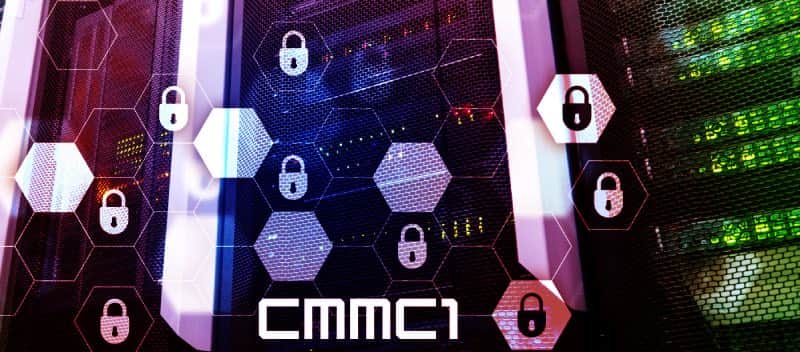
When the Department of Defense revamped its cybersecurity program, it created the “Cybersecurity Maturity Model Certification” (CMMC). The DoD and its contractors are required to follow the CMMC, and businesses may be assigned a “level” of certification. These levels correlate with how well a business is prepared to handle cyber threats against unclassified but sensitive information. The CMMC Level 1 certification simply means that a business has implemented various security controls recommended by NIST. Note that this does not mean that the business necessarily has documented their practices or even that all employees follow them. It means that their processes predominately align with NIST’s security objectives. A Level 1 certification is the first step contractors take in ascending the ranks to the highest possible CMMC level 5. CMMC Level 1 Certification and Preparation Remember, there has been no official guidance released for certification, nor has there been any agency licensed to certify businesses. However, there are clear steps that businesses can take to better posture themselves for future certification. To ensure that time is wisely spent, a prominent cybersecurity firm should be consulted regarding your preparation curriculum. Although the security controls designated as “critical” by FAR have been required for contractors since 2016, getting this certification is a way to distinguish that your company follows them. Before getting into the list of requirements, you should note that all subcontractors and service managers you may employ must also meet all CMMC Level 1 qualification. Now, let’s go over some steps to prepare. First, you’ll need to explain to your employees what the controls are and why they must comply with them. Remember, people are most comfortable continuing to do what they know, even if it’s not correct. It’s imperative to both provide employees with reading materials and training as well as enforce these controls. While CMMC Level 2 and beyond typically require in-house cybersecurity staff, Level 1 does not. These controls may take awhile for companies to follow who have not traditionally followed them. However, following them shouldn’t add any additional expenses and, if anything, should lower operating costs. It’s always safest to partner with another company who is well-versed in the CMMC. It’s quite a lot of text to digest and could be misinterpreted by those who aren’t seasoned in the security field. What Are the CMMC Level 1 Controls? There are 17 primary controls you should know before embarking on your certification journey. Remember that these controls are nuanced and complex; we’re simply summarizing what you should expect to see. Always double-check with actual NIST and FAR standards. Your company will need to prevent non-employees from accessing systems; using decent passwords is often a good fix. You’ll also need to follow the principle of least privilege. That means that users should only have access to information and functions that they need to perform for business purposes. Next, you’ll need to ensure that only your company’s network may be used by company devices. You’ll also need to make sure that you aren’t accidentally leaking sensitive information through publicly accessible sites. Part of this level also involves ensuring users are accountable; each user should have a distinctly logged account on all of your information systems. This is likely common sense, but you must change default passwords used on all devices and systems. All the sensitive data you utilize must be securely destroyed regardless of medium. To keep data secure, you’ll also need to have a reliable antivirus and enable regular scans and threat updates. Finally, you’ll need to keep tabs on who goes in and out of your building. Nobody unauthorized should be permitted to get past your lobby. All visitors should be escorted, and nobody who doesn’t need to access systems should be able to get physically close to them. Implementing Each Security Requirement for CMMC Level 1 Because CMMC is new, being ready for certification can give your business a huge boost above the competition. However, that requires your company to be truly ready for the process of certification. Trusted cybersecurity companies like TrustNet can help get you on track for certification. In the meantime, any security issues at your company can be corrected to avoid costly data breaches. It’s logical to want to keep things in-house to keep costs down. In this instance, however, it would be more costly to not take advantage of a trusted service to help your company out. In the long term, you can ensure that your business is well-positioned to win contracts and stay secure in the process!
What is the Cybersecurity Maturity Model Certification (CMMC)?
The Cybersecurity Maturity Model Certification (CMMC) is a standardized set of requirements developed by the Department of Defense (DoD). Every contractor and governmental subcontractor to the DoD that stores, processes or manages Controlled Unclassified Information (CUI) or Federal Contract Information (FCI). It was developed after analysis by the DoD showed huge inconsistencies in the implementation of cybersecurity measures; in the worst cases, some contractors were intentionally “hacking” around security measures in order to make development faster and easier. What are the benefits of certification to the standard? Certification to the CMMC standards is required for certain contractors and subcontractors beginning in 2020. Due to the CMMC requirement, some contractors have been constrained, leaving the door open for those who earn the certification. Department of Defense Contract Eligibility The Cybersecurity Model Maturity Certification is critical for those working in defense contracting. Any contractor who fails to demonstrate CMMC Compliance can’t win new contracts. Contractors are required to meet CMMC Compliance beginning at Level One through Level Five. Typically, contracts handling “Secret” information will need to meet Level Three or higher. Contractors handling “Top Secret” information will need to meet Level Four in most cases. Finally, contractors handling extremely sensitive information at higher clearance levels (those that use SCIFs) will need to have the highest, Level Five certification. Keep in mind that both practices and processes must be at the same level. If a company’s practices or processes are inconsistent with one another, the lower level will be awarded to the company. Flow-down Requirements One of the major security holes the DoD consistently faced, was that subcontractors did not adhere to reasonable security standards. Under the CMMC requirements, the Prime contractor’s level is the one that is mainly considered. However, non-prime contractors must also meet these CMMC requirements. Depending on the types of data that the contractor can access, their level requirement could differ from that of the Prime contractor. Regardless of the required level for the Prime contractor, under CMMC, every sub-contractor must at minimum obtain a Level One certification to be able to even work in the industry. Improved Security CMMC Certification helps with the following: Lower the risk of employees illegally transmitting or stealing sensitive/classified information. Comply with both voluntary and mandatory security standards set forth by high-profile governmental agencies and NGOs. Depending on the CMMC Level, have the ability to reliably hold off Advanced Persistent Threats (APTs) as well as simple attacks of opportunity. Reduce the overall operating costs by reducing the risk of threats. Attempts that aren’t thwarted may end up costing the company tens of millions of dollars. Win more work over time and become a more trusted and well-known contractor to the DoD. Possible Impacts of CMMC To determine the impact CMMC has on your business, you will first need to look at your data inputs. If you use controlled but not classified information, a Level One certification might be all that’s necessary. If you don’t meet Level One requirements, you risk losing crucial business. The DoD allows companies to be temporarily certified at CMMC Level Two. At Level Two, a company is maxing out what it can do on a basic level but is still not hitting the advanced level of capabilities, processes, and practices that the DoD expects. Though, there is a rule pertaining to when a company must move forward, any company stuck on Level Two should be prepared to lose contracts if it doesn’t quickly advance at a minimum to Level Three. Remember, there are plenty of contractors already at Level Three, so Level Two is not necessarily a competitive advantage. Lastly, recall that all CMMC levels are subject to random auditing by agencies such as NIST. They also require that you have documented in-house auditing procedures. This can be done via utilizing an outside agency. If this is not done, your may lose your contracts. Obtaining CMMC Certification Whether you’re a small contracting startup or a mega-corporation, you will need to obtain CMMC certification if you intend on continuing or starting any DoD contracts. All certifications must be independently assessed by an Accredited CMMC Third Party Assessment Organization (C3PAO). Certification can take months to fully process, as it takes internal and external security professionals to fully verify that you’re in compliance with all domains, practices, and standards that are in place. Consulting with the right professionals like TrustNet, can help you obtain the required CMMC certification needed. Reach out today to learn more.

